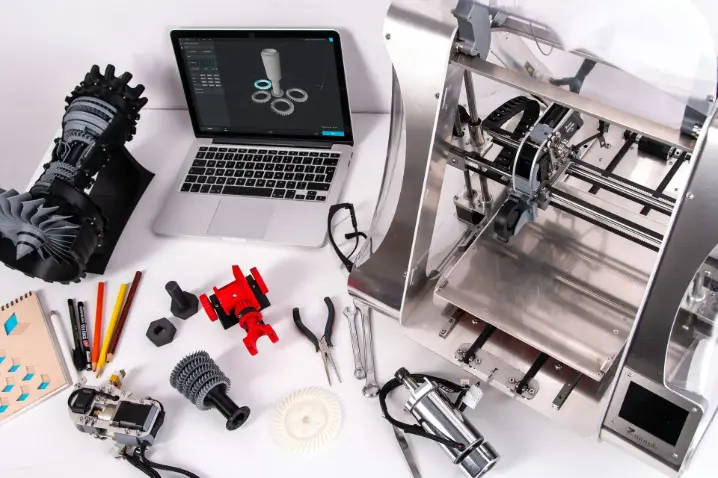The 3D printing industry is booming, with endless opportunities for entrepreneurs to turn their passion into a sustainable business. Whether you're selling printed products, offering services, or even developing your own hardware or software, there’s plenty of room to carve out a niche.
But let’s be real, just owning a 3D printer doesn’t mean you’ll instantly start raking in cash. To actually make money, you need the right strategy, a clear market focus, and a plan to scale. Here’s how to do it.
Step 1: Pick Your Business Model
Before you start printing and selling, decide what type of 3D printing business you want to run. Here are some of the most profitable options:
1. Selling 3D Printed Products
✅ Print and sell unique, in-demand products on platforms like Etsy, eBay, or your own website.
✅ Focus on niche items—popular categories include tabletop gaming miniatures, cosplay props, home decor, and custom tools.
✅ Design your own models to stand out and avoid copyright issues.
2. Offering 3D Printing Services
✅ Provide on-demand printing for customers who need custom prints but don’t have a printer.
✅ Partner with businesses for prototyping, manufacturing, or architectural modelling.
✅ Use platforms like Treatstock, 3DHubs, or Fiverr to connect with customers.
3. Selling 3D Models & Designs
✅ If you’re skilled at CAD design, sell STL files on sites like Cults3D, MyMiniFactory, and CGTrader.
✅ License your designs for commercial use to gain passive income.
✅ Focus on industries like gaming, medical, or engineering for high-value models.
4. Building and Selling Custom 3D Printers
✅ If you’re mechanically inclined, consider building and selling 3D printers or upgrade kits.
✅ Create custom modifications, such as improved extruders, enclosures, or high-speed configurations.
✅ Sell parts and kits for modding existing printers (like Klipper conversion kits).
5. Filament and Accessory Sales
✅ Start an online store selling filaments, nozzles, and other essential supplies.
✅ Consider developing eco-friendly or specialty filaments to differentiate yourself.
✅ Partner with manufacturers and dropship products to avoid large upfront inventory costs.
Step 2: Choose the Right 3D Printer & Materials
Your printer setup will depend on your business model. Here’s a quick guide to choosing the best equipment:
- For product sales & services → Choose a reliable FDM printer (Prusa, Bambu Lab, Creality) for versatility.
- For high-detail prints (miniatures, jewellery, dental) → Use a resin printer (Elegoo, Anycubic, Formlabs).
- For industrial & prototyping work → Consider high-end FDM, SLA, or SLS printers (Raise3D, Ultimaker, Prusa XL).
Also, stock up on the right filaments:
- PLA – Cheap and easy to print, great for general products.
- PETG – Stronger and more durable, perfect for functional parts.
- TPU – Flexible filament, great for phone cases, grips, or wearables.
- Resin – Ideal for miniatures, jewellery, and high-detail prints.

3D Printing Filaments 101: Choosing the Right Material for Your Prints
When it comes to 3D printing, the filament you choose can make or break your project. Whether you're printing simple prototypes, functional parts, or artistic models, selecting the right material is crucial. With so many filament types available, how do you know which one to use? Let’s break down the most common options, their pros and cons, and the best use cases for each.
View this blog post!Step 3: Pricing Your Products & Services
One of the biggest mistakes new 3D printing businesses make is undervaluing their work. Here’s how to price smartly:
- Cost of Materials → Filament/resin, electricity, printer maintenance.
- Printing Time → Charge per hour or per job (higher speeds = more profit).
- Post-Processing Time → If sanding, painting, or assembly is required, add a labor fee.
- Market Value → Research similar products to stay competitive.
🔹 Example Pricing Model:
A custom 3D-printed phone stand costs £2 in filament, takes 3 hours to print, and 30 minutes to post-process. If you value your time at £10/hour, your price should be at least £20-£30 to make a profit.
Step 4: Find Your Customers
A business is nothing without customers. Here’s where to find them:
Online Marketplaces:
- Etsy → Best for handmade & custom 3D prints.
- eBay & Amazon → Good for mass-market items.
- Shopify & WooCommerce → Best if you want your own store.
Freelance & Print-on-Demand Services:
- Fiverr & Upwork → Offer custom 3D modelling or printing services.
- Treatstock → Let customers order prints from you.
Social Media & Community Engagement:
- Instagram & TikTok → Showcase time-lapse prints and finished products.
- Reddit & Facebook Groups → Promote in niche communities (e.g., r/3Dprinting, prop-making groups).
- YouTube → Share tutorials and reviews to build an audience.
Step 5: Scale & Automate Your Business
Once you're making consistent sales, it’s time to scale.
✅ Optimize your workflow – Run multiple printers, use OctoPrint/Klipper for remote monitoring, and automate post-processing.
✅ Expand product lines – Add new designs or offer customization services.
✅ Invest in better equipment – Upgrade to faster printers, auto bed levelling, and multi-material setups.
✅ Outsource and automate – Use a fulfilment service for shipping or hire help as you grow.
Final Thoughts: Is a 3D Printing Business Worth It?
Yes, if you approach it the right way. 3D printing is not a get-rich-quick scheme, but if you focus on quality, find a strong niche, and market yourself effectively, you can turn your passion into a profitable business.
🚀 Ready to start? Let us know in the comments what kind of 3D printing business you’re thinking of launching!